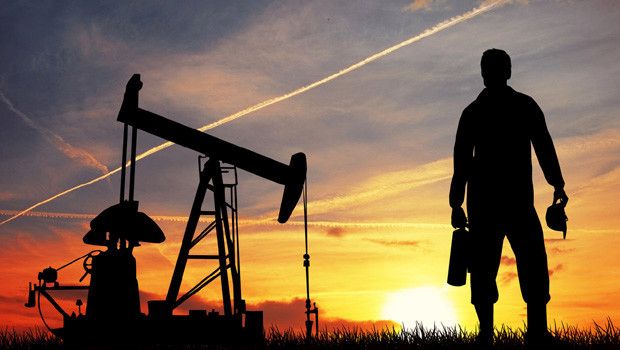September 21, 2022
The IEA Oil Market Report (OMR) is one of the world’s most authoritative and timely sources of data, forecasts and analysis on the global oil market – including detailed statistics and commentary on oil supply, demand, inventories, prices and refining activity, as well as oil trade for IEA and selected non-IEA countries.
- Growth in global oil demand continues to decelerate, weighed down by renewed Chinese lockdowns and an ongoing slowdown in the OECD. This is partly offset by large-scale switching from gas to oil, estimated to average 700 kb/d during 4Q22 and 1Q23, double the level of a year ago. World oil demand is forecast to rise by 2 mb/d in 2022 and 2.1 mb/d in 2023, marginally lower than in last month’s Report.
- World oil production rose 790 kb/d in August to 101.3 mb/d, with a strong recovery in Libya and smaller gains from Saudi Arabia and the UAE offset by losses in Nigeria, Kazakhstan and Russia. From August through December, growth is forecast to slow, edging up by just 280 kb/d to 101.6 mb/d. In 2022, global production is forecast to rise by 4.8 mb/d, to 100.1 mb/d, and by 1.7 mb/d in 2023 to 101.8 mb/d.
- Persistent demand weakness in China considerably slowed the pace of a summer ramp-up in refining activity. After reaching a post-Covid peak in August of 81.4 mb/d, refinery throughputs are expected to fall in September-October on seasonal maintenance. With lower runs, refined product inventories are now unlikely to see any substantial builds for the remainder of the year.
- Russian total oil exports rose by 220 kb/d in August to 7.6 mb/d, down 390 kb/d from pre-war levels. Estimated export revenues fell by $1.2 bn to $17.7 bn. Russian crude oil imports into the EU/UK have fallen by 880 kb/d since the start of the year to 1.7 mb/d, while imports from the US have risen by 400 kb/d to 1.6 mb/d. Iraq, Norway, Guyana and Saudi Arabia have also increased shipments to the EU.
- Global observed inventories fell by 25.6 mb in July on a drawdown in crude stocks in China and oil on the water as well as from IEA government stocks. OECD industry stocks rose by 43.1 mb to 2 705 mb, narrowing the deficit versus the five-year average to 274.9 mb. IEA member countries released nearly 180 mb of public stocks from March through August, with over 50 mb to be delivered through October.
- Brent futures lost $34/bbl and backwardation fell 65% in just three months following a June peak, reflecting a seasonal slowdown in refinery purchases and increased supplies, as well as escalating concerns about the world economy. Growing pessimism about an Iran deal offered some support to prices that saw Brent recover to over $93/bbl at the time of writing. Freight rates remain stubbornly high.
Brent crude oil futures slipped below $90/bbl in early September, the lowest level since January and more than $34/bbl below a June peak. This is the largest 90-day decline since March-April 2020 and is only exceeded prior to 2020 by market routs in 2014-15 and 2008-09. Yet, diesel and jet fuel markets remain exceptionally tight, as reflected in current pricing.
For now, a deteriorating economic environment and recurring Covid lockdowns in China continue to weigh on market sentiment. Nevertheless, world oil demand is forecast to grow by 2 mb/d in 2022 and 2.1 mb/d next year. Jet fuel dominates growth, while road transport demand wanes. Robust oil use for power generation in the Middle East and in Europe due to record natural gas and electricity prices is providing additional support.
At the same time, more oil is hitting the market. IEA member countries released nearly 180 mb of government stocks from March through August, with a further 52 mb scheduled for the next two months. Moreover, world oil supply increased by 790 kb/d in August to 101.3 mb/d – up more than 5 mb/d on a year ago. Russian oil production and exports have proved resilient, with August levels only 400-450 kb/d below pre-war levels. Despite a 2 mb/d drop in Russian crude and oil products shipments to Europe, the US, Japan and Korea since the start of the year, the rerouting of flows to India, China, Türkiye and others has mitigated upstream losses.
However, the EU embargo on Russian crude oil and product imports that comes into effect in December 2022 and February 2023, respectively, is expected to result in deeper declines. An additional 1 mb/d of products and 1.4 mb/d of crude will have to find new homes. An EU ban on maritime services may force further reallocations from third countries not agreeing to the proposed G7 price cap. Russian total oil production is forecast to decline to 9.5 mb/d by February 2023, a 1.9 mb/d drop compared to February 2022.
Such losses would still leave the market oversupplied in 2H22, by close to 1 mb/d, and roughly balanced in 2023. But product markets, especially diesel, are expected to remain in deficit due to downstream capacity constraints outside of China. Global diesel markets have tightened this year, with demand robust and as lower Chinese export quotas have sharply reduced its sales abroad. More recently, newly introduced taxes in India have discouraged exports from Asia’s largest supplier.
The EU has so far largely maintained Russian diesel import volumes at around 600 kb/d, but from next February these volumes will need to be replaced by other sources. Three large refinery projects in Kuwait, Nigeria and Mexico coming online by the end of 2023 will eventually increase global diesel availability. The proposed price cap mechanism would also need to work in order to assure overall diesel supply for the global market is met and so that European importers can switch to flows from the US, Middle East and India. Failing that, and assuming Russia will not be able to ship diesel in significant quantities outside the price cap, European, Latin American and African importers could be competing for a rather smaller pool of available flows.
Source: International Energy Agency
Legal Notice: The information in this article is intended for information purposes only. It is not intended for professional information purposes specific to a person or an institution. Every institution has different requirements because of its own circumstances even though they bear a resemblance to each other. Consequently, it is your interest to consult on an expert before taking a decision based on information stated in this article and putting into practice. Neither Karen Audit nor related person or institutions are not responsible for any damages or losses that might occur in consequence of the use of the information in this article by private or formal, real or legal person and institutions.






